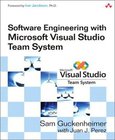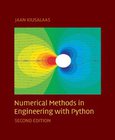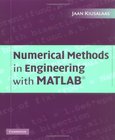Traffic Engineering with MPLS

Book Details:
| Publisher: | Cisco Press |
| Series: | Cisco Press |
| Author: | Eric D. Osborne |
| Edition: | 1 |
| ISBN-10: | 1587050315 |
| ISBN-13: | 9781587050312 |
| Pages: | 608 |
| Published: | Jul 27 2002 |
| Posted: | Nov 19 2014 |
| Language: | English |
| Book format: | |
| Book size: | 5.79 MB |
Book Description:
Design, configure, and manage MPLS TE to optimize network performance Almost every busy network backbone has some congested links while others remain underutilized. That's because shortest-path routing protocols send traffic down the path that is shortest without considering other network parameters, such as utilization and traffic demands. Using Traffic Engineering (TE), network operators can redistribute packet flows to attain more uniform distribution across all links. Forcing traffic onto specific pathways allows you to get the most out of your existing network capacity while making it easier to deliver consistent service levels to customers at the same time. Cisco(r) Multiprotocol Label Switching (MPLS) lends efficiency to very large networks, and is the most effective way to implement TE. MPLS TE routes traffic flows across the network by aligning resources required by a given flow with actual backbone capacity and topology. This constraint-based routing approach feeds the network route traffic down one or more pathways, preventing unexpected congestion and enabling recovery from link or node failures. Traffic Engineering with MPLS provides you with information on how to use MPLS TE and associated features to maximize network bandwidth. This book focuses on real-world applications, from design scenarios to feature configurations to tools that can be used in managing and troubleshooting MPLS TE. Assuming some familiarity with basic label operations, this guide focuses mainly on the operational aspects of MPLS TE-how the various pieces work and how to configure and troubleshoot them. Additionally, this book addresses design and scalability issues along with extensive deployment tips to help you roll out MPLS TE on your own network. Understand the background of TE and MPLS, and brush up on MPLS forwarding basics Learn about router information distribution and how to bring up MPLS TE tunnels in a network Understand MPLS TE's Constrained Shortest Path First (CSPF) and mechanisms you can use to influence CSPF's path calculation Use the Resource Reservation Protocol (RSVP) to implement Label-Switched Path setup Use various mechanisms to forward traffic down a tunnel Integrate MPLS into the IP quality of service (QoS) spectrum of services Utilize Fast Reroute (FRR) to mitigate packet loss associated with link and node failures Understand Simple Network Management Protocol (SNMP)-based measurement and accounting services that are available for MPLS Evaluate design scenarios for scalable MPLS TE deployments Manage MPLS TE networks by examining common configuration mistakes and utilizing tools for troubleshooting MPLS TE problems "Eric and Ajay work in the development group at Cisco that built Traffic Engineering. They are among those with the greatest hands-on experience with this application. This book is the product of their experience." -George Swallow, Cisco Systems, Architect for Traffic Engineering Co-Chair, IETF MPLS Working Group Eric Osborne, CCIE(r) #4122, has been doing Internet engineering of one sort or another since 1995. He joined Cisco in 1998 to work in the Cisco Technical Assistance Center (TAC), moved from there to the ISP Expert team and then to the MPLS Deployment team. He has been involved in MPLS since the Cisco IOS(r) Software Release 11.1CT days. Ajay Simha, CCIE #2970, joined the Cisco TAC in 1996. He then went on to support tier 1 and 2 ISPs as part of Cisco's ISP Expert team. Ajay has been working as an MPLS deployment engineer since October 1999, and he has first-hand experience in troubleshooting, designing, and deploying MPLS.
Download Link:
Related Books:
Software Engineering with Microsoft Visual Studio Team System
Software Engineering with Microsoft Visual Studio Team System is written for a software team that is considering running a software project using Visual Studio Team System (VSTS). It is about the "why" of VSTS: its guiding ideas, why they are presented in certain ways, and how they fit into the process of managing the software lifecycle. This book is the next best thing to having an onsite coach who can lead the team through a consistent set of processes. It is a framework for thinking about software projects in a way that can be directly tooled by VSTS. It presents essential theory and practical examples to describe a realistic process for IT projects. This is a book that any team using or considering VSTS should read....
Numerical Methods in Engineering with Python
2nd Edition
Numerical Methods in Engineering with Python, 2nd Edition is a text for engineering students and a reference for practicing engineers, especially those who wish to explore Python. This new edition features 18 additional exercises and the addition of rational function interpolation. Brent's method of root finding was replaced by Ridder's method, and the Fletcher-Reeves method of optimization was dropped in favor of the downhill simplex method. Each numerical method is explained in detail, and its shortcomings are pointed out. The examples that follow individual topics fall into two categories: hand computations that illustrate the inner workings of the ...
Numerical Methods in Engineering with MATLAB
Numerical Methods in Engineering with MATLAB is a text for engineering students and a reference for practicing engineers, especially those who wish to explore the power and efficiency of MATLAB. Examples and applications were chosen for their relevance to real world problems, and where numerical solutions are most efficient. Numerical methods are discussed thoroughly and illustrated with problems involving both hand computation and programming. MATLAB mfiles accompany each method and are available on the book web site. This code is made simple and easy to understand by avoiding complex bookkeeping schemes, while maintaining the essential features of the method. MATLAB was chosen as the example language because of its ubiquitous use in engineering stu...
2007 - 2021 © eBooks-IT.org



